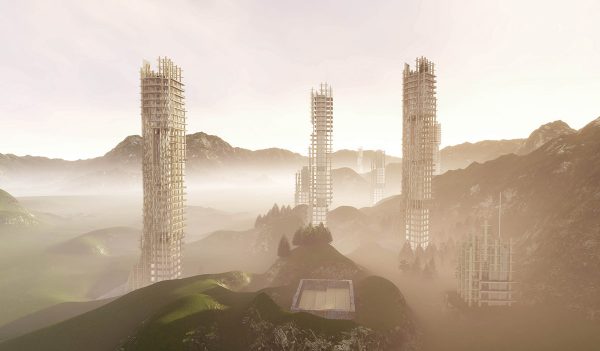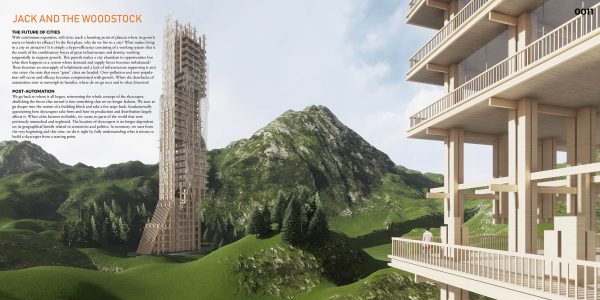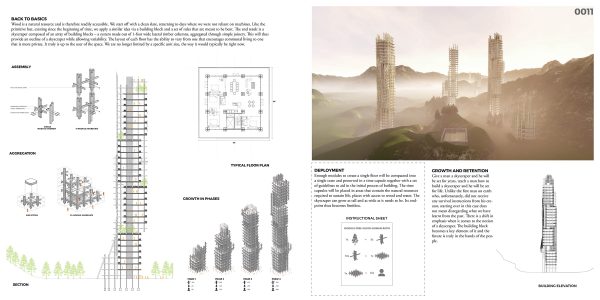Jack And The Woodstock Skyscraper
Honorable Mention
2019 Skyscraper Competition
Amanda Gunawan, Joel Wong
United States
The future of cities
With continuous expansion, will cities reach a looming point of plateau where its growth starts to hinder its efficacy? In the first place, why do we live in a city? What makes living in a city so attractive? It is simply a hyper-efficiency consisting of a working system that is the result of the combinatory forces of great infrastructure and density, working tangentially to support growth. This growth makes a city abundant in opportunities but what then happens to a system whose demand and supply forces becomes imbalanced? There becomes an oversupply of inhabitants and a lack of infrastructure supporting it and vice versa- the state that most “great” cities are headed. Over-pollution and over-population will occur and efficacy becomes compromised with growth. When the drawbacks of automation start to outweigh its benefits, where do we go next and in what direction?
Post-automation
We go back to where it all began, reinventing the whole concept of the skyscraper, abolishing the forces that turned it into something that we no longer fathom. We start to go deeper into the notion of a building block and take a few steps back, fundamentally questioning how skyscrapers take form and how its production and distribution largely affects it. When cities become unlivable, we vacate to parts of the world that were previously untouched and neglected. The location of skyscrapers is no longer dependent on its geographical benefit related to economics and politics. In summary, we start from the very beginning and this time, we do it right by fully understanding what it means to build a skyscraper from a starting point.
Back to basics
Wood is a natural resource and is therefore readily accessible. We start off with a clean slate, returning to days where we were not reliant on machines. Like the primitive hut, existing since the beginning of time, we apply a similar idea via a building block and a set of rules that are meant to be bent. The end result is a skyscraper composed of an array of building blocks – a system made out of 1-foot wide lateral timber columns, aggregated through simple joinery. This will thus provide an outline of a skyscraper while allowing variability. The layout of each floor has the ability to vary from one that encourages communal living to one that is more private. It truly is up to the user of the space. We are no longer limited by a specific unit size, the way it would typically be right now.
Deployment
Enough modules to create a single floor will be compacted into a single crate and preserved in a time capsule together with a set of guidelines to aid in the initial process of building. The time capsules will be placed in areas that contain the natural resources required to sustain life, places with access to wood and water. The skyscraper can grow as tall and as wide as it needs to be. Its end-point thus becomes limitless.
Growth and retention
Give a man a skyscraper and he will be set for years, teach a man how to build a skyscraper and he will be set for life. Unlike the first man on earth who, unfortunately, did not receive any survival instructions from his creator, starting over in this case does not mean disregarding what we have learnt from the past. There is a shift in emphasis when it comes to the notion of a skyscraper. The building block becomes a key element of it and the future is truly in the hands of the people.



Yorumlar
Yorum Gönder